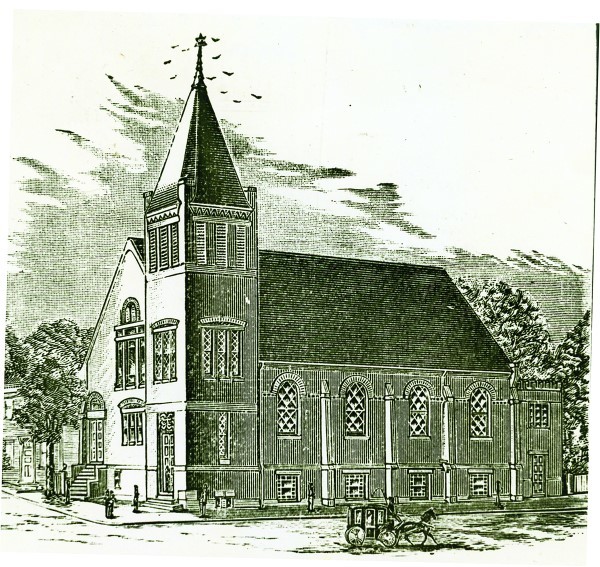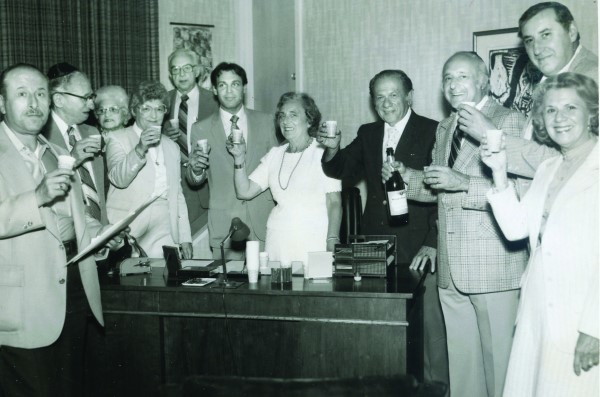Staying alive: Scrappy synagogues
Editor’s Note: This article is the first of a multi-part exploration of the fascinating story of mergers, moves, and changes the many Rhode Island synagogues undergo. The RIJHA archives contain paperwork from nearly all of the synagogues that have graced our state from the late 19th century until today. Sometimes the archival records are contradictory or unclear, and it is our hope that our readers will notify us of any errors and provide any additional information. Future articles will be focused on investigating the complicated genealogy of synagogue mergers and moves in Rhode Island.
What are the generations of a synagogue? Here in Rhode Island, as in many other states, congregations can begin as small shuls, and eventually grow and change to fit the shifting needs and desires of the communities around them
Along the way, small groups merge, then join with other groups as they get larger. Sometimes they change buildings, erecting a new one nearby or even going to another part of the state. Their denominations can change too, going from Orthodox to Reform or in the other direction, stopping by Conservative. In Rhode Island, we do not have Reconstructionist or Renewal – for that, you have to go just over the border, to Attleboro, Massachusetts, – but we do have many of the other denominations or “brands,” such as Chabad, yeshivish, or informal minyans run out of homes. Unfortunately, sometimes even they close down.
The many possible reasons for these changes include a group’s need of a new place due to a merger, or a life-saving merger of two groups, caused by the dwindling numbers. Over time, some congregations find they are no longer viable in their denomination, so they decide to switch. This conversion, however, doesn’t have to be final, and they can revert back later. Then, as demographics change, people move from one neighborhood to another, or even to the suburbs. The synagogues do too, following their members.
By the beginning of the 20th century, many small shuls were scattered in the north end and south end of Providence. Most of them began as Orthodox, and were often established by people from the same town in Europe. In 1888, immigrants founded the Romanian shul, Aghedath Israel, in the south end of Providence. (Note the strange spelling of Aghedath, rather than the more modern spelling of Agudath.) Then in 1910, Tifereth Israel was established at 254 Willard Ave. It was also called the Romanian Shul. We don’t know what happened to Aghedath Israel, but Tifereth Israel joined with Anshe Kovno, which was established in 1890, to become Tifereth Israel-Anshe Kovno.
Temple Beth-El is Reform, but its ancestry was Orthodox. The two oldest shuls in Providence, the Sons of Israel and the Sons of David, merged in 1874 to become the Sons of Israel and David; both were located in the downtown/South Providence area. Many referred to this combined shul as the Friendship Street Shul, based on its initial location. However, by 1911 it was no longer Orthodox. That was the year when it moved to a new location at 688 Broad St. The new building became known as Temple Beth-El, but the congregation continued to be known formally as Congregation Sons of Israel and David.
On the other hand, Congregation Beth Sholom, which today is Modern Orthodox, had an equally meandering story of movements and mergers. It began in 1897 as Ahavath Sholom on Lippitt Hill (now known as University Heights Plaza), but everyone referred to it as the Howell Street Shul. As it grew, money was raised to build a new building in 1949. Temple Beth Sholom, which was changed from Orthodox to Conservative; in the 1980s, it reverted to being Orthodox.
Congregations move all the time, sometimes because they want a new home and other times because a home was destroyed (many in the North End experienced this when Interstate 95 was built). Temple Torat Yisrael was originally made up of Congregation Beth Israel, established in 1921 on Niagara Street in Providence. In 1981, it merged with Temple Beth Torah, which was established in 1956 on Park Avenue in Cranston. In 2013 the congregation moved to East Greenwich. As demographics change, so do physical locations.
As you can see, in America, Jewish places of worship on the cusp of bankruptcy have often survived via mergers with larger, more vibrant nearby places of worship. That way, their memory lived on through a changed congregational name and movement of holy objects, not just through old members’ reminiscences.
RUTH BREINDEL is the president of the Rhode Island Jewish Historical Association. JOSHUA JASPER is the executive director and librarian/archivist of the RIJHA. For more information, contact RIJHA via info@rijha.org or 401-331-1360. Our archives are open to the public Monday through Friday.











